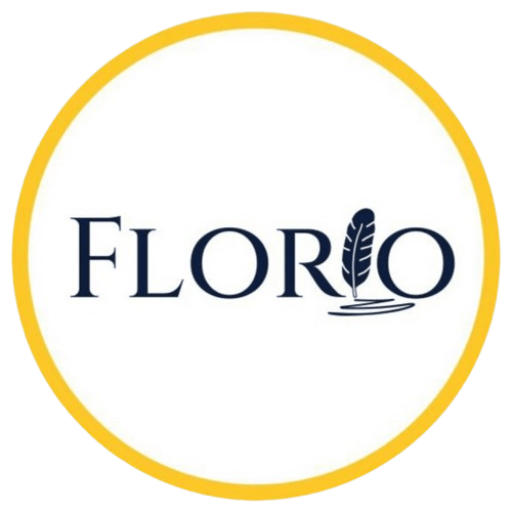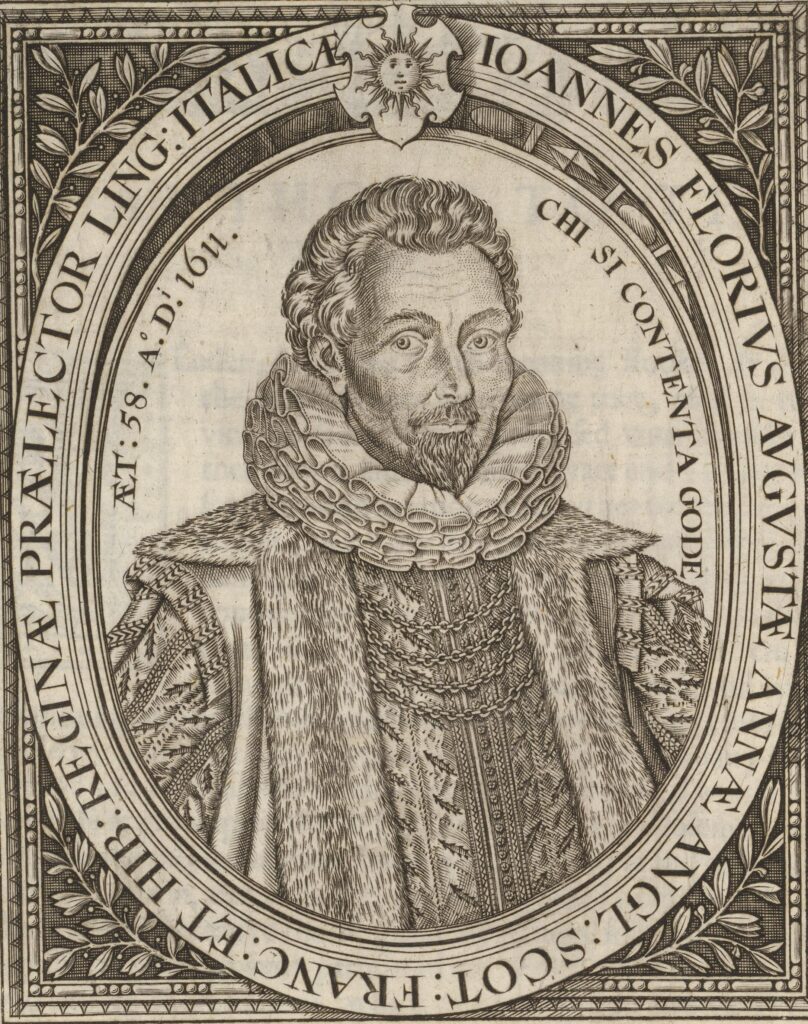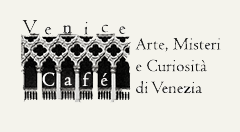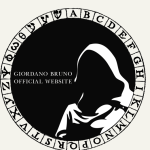Between the summer of 1583 and 1585 John Florio moved with his family at the French Embassy. It was situated in London, at Beaumont House, Butcher Row. The French Ambassador at the time was Michel de Castelnau, Lord of Mauvissiere. His first mission was to defend the cause of Mary Stuart against Elizabeth. Similarly, he watched the intrigues between England and the French Protestants.
John Florio’s employments
Castelnau employed Florio for two years as tutor in languages to his daughter Catherine Marie. Secondly, he also employed him “in other honourable employment”, in the discharge of which duties he “bore himself prudently, honestly and faithfully.“ 1 As a result, Florio earned the warm commendation of his master and all the household. His duties, beside that of tutor, translator and interpreter, were of personal secretary and legal representative of the ambassador when the latter departed from London.
John Florio with Walsingham, Raleigh and London society
At the French Embassy, Florio got intimate with the London society as well, both aristocratic and literary. Above all, he had the chance to attend several meetings with Lord Burghley, Walter Raleigh, Francis Walsingham, the Countess of Oxford and the Countess of Sussex. Undoubtedly he did not fail to extract advantage from these opportunities. This prove that his connection with Castelnau was an important step in his career, earning the position of loyal Englishman. Subsequently, he enjoyed the full confidence and friendship of the ambassador, working both as scholar as well as diplomat.
John Florio & the Babington Plot
When Castelnau and Giordano Bruno departed from the French Embassy in 1585, The English situation was precarious. The succession of anti-Elizabeth plots like the Norfolk conspiracy certainly had shown an immense dissention among the English people. It had become apparent to the Protestant faction that a Catholic revival was gaining momentum in their country. 2 During the captivity of Mary, Queen of Scots, several attempts were made to place her on the English throne. The most significant of these was the Babington Plot, which ultimately led to Mary’s trial and execution in 1587. The person for whom the plot was named was Anthony Babington.
John Florio: Queen Elizabeth’s spy
Babington began to write his own letters to Mary. Written in cipher, Babington’s letters explained his plans to rescue her and reestablish Catholicism in England. What Babington and Mary did not realize, however, was that their letters were being intercepted by Elizabeth’s spies. One of these, was John Florio. Walsingham also hired Gilbert Gifford, an exiled English Catholic, as a double agent. Gifford was to reestablish contact with Mary. Letters between Mary and her supporters, including Babington’s letters, were sent via a beer keg supplied by a brewer. While in his possession, Walsingham had the letters deciphered and copied. Later, in 1586, Babington wrote a letter outlining the details of the plot to rescue Mary. In the letter, he asked for Mary’s permission to assassinate Elizabeth. When she agreed, Walsingham had his proof. Consequently, Mary was tried on the basis of the forged evidence and executed in February 1587. William Vaughan’s Golden Fleece was written one year after Florio’s death, in 1626. It contains references to Florio’s involvement in the conspiracy of Babington of 1586. Walsingham, also thanks to Florio’s help, as suggested by Vaughan, was able to intercept and decode Mary’s correspondence.
John Florio & Queen Elizabeth I
During his stay at the French Embassy Florio accompanied Castelnau to his audiences to the Queen. In the dedication of his Dictionary, for example, John Florio, praising Elizabeth, discussed her proficiency in languages. In fact, he asserted that:
“… of whose innumerable excellences, if not the fore-most, yet most famous I have heard, and often haue had the good hap and comfort to see, that no Embassador or stranger hath audience of her Maiestie, but in his natiue toong.”3
Florio: translator of news
John Florio also embarked in a new, pioneering job as translator of news. In the Elizabethan England this trend had a tremendous demand, and quickly became a class of literature. Newspapers were not yet born. Even so, Florio intuitively began to translate several Italian newsletters that had been dispatched from Rome to France. The Roman correspondent provided news of events surrounding the papacy and other gossips from various parts of the world. The resulting pamphlet was published in 1585 entitled A letter lately written from Rome, by an Italian gentleman to a freende of his in Lyons in Fraunce. Translated it from Italian, Florio dedicated it to the Earl of Derby.
Captain Emmo & Rialto
Among divers facts that Florio translated and reported, there is the story of Captain Emmo. He was a nobleman of Venice, who went out to scour the seas for pirates. Near Corfu, he meet a galley belonging to the King of Algeria going with tribute to the Great Turk. He was with his wife and her two daughters. While disregarding the alliance between Venice and Turkey, Emmo fell upon this galley and took the booty murdering the crew. He also dishonoured the two daughters and threw their mother into the sea.
Truely a lamentable and memorable case that a lady in that extremitie, flooting up and downe the waters, with smyling countenance, should take her death so constantly, saying, that it was more pleasant unto her to die, then to live with such a wicked beast.” – John Florio.
Rialto
The Rialto in Venice figures in another story Florio translated from the news. An explanatory note is added to make the word clear to English readers: “A noble man of the house of Contarini, even in the Rialto (which is a place in Venice as the Royall Exchange in London) shot at another Noble man with a Pistol..” .4
John Florio & Giordano Bruno
Living with Giordano Bruno was the most important experience Florio had at the French Embassy. Bruno’s influence will have a huge impact upon him. The philosopher, undoubtedly shaped Florio’s character changing his vision of life and world permanently. Likewise, it’s highly probable that it was Bruno who introduced Florio to Castelnau after their first meeting in Oxford. The great Italian philosopher, in fact, came to England in the spring of 1582. He had been lecturing in Paris winning the favour of Henri III. Later, the King gave him a letter of introduction to Michel de Castelnau. Later, Bruno went to Oxford to dispute the Aristotelian physics, but his discourse wasn’t received with favour. Bruno was left alone and in a country where he didn’t speak the language. In such a difficult situation, Castelnau took him into the French Embassy in London.
The Ash Wednesday Supper
Those two years in London were, for Bruno, a peaceful heaven where he focused on his writings. Consequently, he thanked the French Ambassador for the hospitality and protection he received. Bruno surely received many attacks after the quarrel and tumultuous period that followed The Ash Wednesday Supper. During that party he discussed his revolutionary theories. After that, he got into a quarrel with the guests who didn’t receive with favour his ideas. Undoubtedly, Florio and Castelnau always defended him. Bruno described the event in a philosophical pamphlet written the same year: La Cena delle Ceneri. In a copy of this work kept at the National Library in Naples the event is described happening at Whitehall.5
Giordano Bruno, Fulke Greville, Philip Sidney
The publication of La Cena delle Ceneri led to a rift between Fulk Greville and Giordano Bruno. While the exact role Florio played in the controversy remains unclear, it is reasonable to assume that, as Bruno’s friend, he would have found it difficult to remain uninvolved. Moreover, Greville had invited Florio to attend the Ash Wednesday supper on February 14, 1584, further indicating his connection to the unfolding drama. It is also likely that Philip Sidney’s friendly attitude toward Bruno helped bring Florio into closer contact with that intellectual circle. Ultimately, this relationship paved the way for Florio to oversee the printing of Sidney’s Arcadia in 1590.
Giordano Bruno & Michel de Castelnau
Giordano Bruno often accompanied Castelnau to his audiences to the Queen. In the court documents of his trial in Rome, he publicly admitted that during his stay at the French Embassy, many times had the chance to accompany Castelnau to the Queen Elizabeth 6 described in his work De La Causa, Principio et Uno as “diva”. Bruno considered the French Ambassador a welcoming, kind and sincere friend. However, some historians have tried to pen the Nolan philosopher as a spy or saboteur of Castelnau. 7 But the documents of that period prove that Bruno was in good terms with the French ambassador. 8 From Bruno, we also learn a few domestic details: he was much attached to the ambassador’s daughter, Catherine Marie. For instance, he spoke about her with kindness:
“Hardly yet six years of age, she speaks Italian, French, and English so equally that no one can tell her nationality; she plays various instruments so that one wonders whether she be flesh or spirit, and form her already ripe and noble bearing, whether she be of earth of have come down from the skies. Both her parents reappear alike in her body and in her mind.” 9
Giordano Bruno’s works at the French embassy
Moreover, well suited at the embassy and welcomed by a warm atmosphere, Bruno produced some of his most exciting works. Sir Philip Sydney was undoubtedly enchanted with Bruno’s scholarship and imagination and gave him generous patronage to continue his works.
- La Cena de le Ceneri (The Ash Wednesday Supper, 1584)
- De la Causa, Principio et Uno (On Cause, Principle and Unity, 1584)
- De l’Infinito, Universo e Mondi (On the Infinite, Universe and Worlds, 1584)
- Lo Spaccio de la Bestia Trionfante (The Expulsion of the Triumphant Beast, 1584)
- De gl’ Heroici Furori (On the Heroic Frenzies, 1585).
Living with Giordano Bruno under the same roof for two years, John Florio embraced Bruno’s philosophy. Above all, the thesis upon the infinite universe, the post-Copernican, heliocentric theory and the possibility of life on other planets. Florio also got to know other important themes that Bruno discussed in his works:
- The strong and decisive condemnation of a corrupt and arrogant power.
- The fiercely satirical treatment of the pedants.
- Anti-Petrarchism.
- Death as a pure moment of passage in the courses and appeals of a universal vicissitude.
- The arduous search, within this new infinite universe, for a new historical and civil role for the man of thought.
The friendship that linked Bruno and Florio is particularly rich and significant. Florio in fact appears in La Cena delle Ceneri as one of the messengers that brings to Bruno the invitation to dinner by Fulke Greville. In another scene Bruno and Florio are on a boat at night. They burst into song chanting stanzas from Ludovico Ariosto‘s Orlando Furioso. Later, Bruno will portray him as “Eliotropo” in De La Causa, Principio et Uno. In Dell’Infinito, Universo e Mondi, fifth dialogue, Bruno adds Florio as “Elpino” and Alberico Gentili as “Albertino”. Similarly, Florio returned the compliment by introducing the figure of Bruno, ‘Il Nolano’, in Second Fruits (1591). He portrayed him lounging on a window-seat, leafing through a book and poking fun at his friend John for taking too much time over getting dressed in the morning.
‘Oh feminil ingegno’ warbled the Nolan, following Messer Florio’s rendering of ‘Dove, senza me, dolce mia vita’ which he sang as though thinking of his loves.” 10
Bruno, Giordano. Ash Wednesday Supper.
Giordano Bruno in John Florio’s works
The portrait painted by Florio is undoubtedly that of a friend. Bruno surely appears in his pages in a positive light, like a satirical and healthy whip of pedants. Florio will never forget Bruno, even after the long years of the trial and their tragic outcome at the stake. For instance, in 1603, John Florio recalled his old “fellow Nolano”, who had taught him the cultural value of translations:
“’Yea but my olde fellow Nolano tolde me, and taught publikely, that from translation all Science had its of-spring.”
John Florio, “To the Corteous Reader”, Montaigne’s Essays, 1603.
Moreover, in 1611, he listed Bruno’s Italian works among the texts he used for the composition of the dictionary. Bruno scholars Gentile and Spampanato have both proved Florio’s indebtedness to the philosopher’s writings. Many of Bruno’s thoughts are undeniably shaped in Florio’s work Second Fruits. Also, in his two dictionaries Florio added many terms as well as Neapolitan dialect words taken from Bruno’s works. 11
William Gryse: the attack at the French embassy
Life at the French Embassy wasn’t always easy for Bruno and Florio. In fact, an unfortunate event happened with a certain William Gryse, clerk for the Queen’s stable. He was building a house in Butcher’s Row, the same street of The French Embassy. Gryse used a rude language to the household. He called them “French dogs, villains and rascals.” One day later, he assembled a number of people in the street, including ten armed men. They broke all the windows of the embassy, injuring three persons. They also dragged Florio and other people out of their chambers, animated by the intense dislike of foreigners. After that, Florio recalled this unfortunate even in his 1591 work Second Fruits.12
Michel Castelnau’s reference letter for John Florio
The ambassador Castelnau and Giordano Bruno came back to France in 1585. As a result, the French ambassador passed into the service of his successor, Casteauneuf de l’Aubespine. Before leaving the Embasssy, Castelnau wrote a reference letter in Latin for Florio (in double copy) on September 28, 1585. He praised John Florio and his capacities demonstrated during the two years at the French Embassy. In the letter “Iohannes Florius” is described as dedicated “mainly in the education of our daughter Caterina Maria, the interpretation of languages, and other residual honorific tasks”, without further remuneration (“caeterisque honorificis administrationibus”).
Below you can read the Latin letter of reference on September 28th 1585 translated into English:
“We, Michel de Castelnau, (..) Through these words we undoubtedly attest to all and everyone that the noble master, John Florio, during the two-year period when, at our service, and in our familiarity he devoted himself mainly to the tuition of our daughter Caterina Maria.
In the interpretation of tongues, and to residual honorific tasks he behaved in such a prudent, sincere and faithful manner that he in no way merited any remarks of bad satisfaction.
But especially showed himself worthy of being praised and recommended by me and by all my family members. So I promise that neither I nor my family will ever fail, as for everyone’s authority, to give proof, in any future, in favor of or for him, if necessary. We have approved the above words, signed in our own handwriting as a guarantee of the above, and bearing the usual seal. September 28th , 1585 Castelnau.”
John Florio’s offer
The reference letter was written in Latin by Florio himself, with the approval and subscription of the French ambassador. Firstly, Iohannes Florius underlined that he devoted himself mainly to the education of the ambassador’s daughter, Catherine Marie. He also pointed out other residual honorary positions, assignments carried out “honoris causa”, “by way of honor”. It is clear that the remuneration for the main assignments also included various assignments useful to the patron. In short, a real tempting promotional offer, including additional unpaid services.
Iohannes Florius in this way proved to be a true “marketing man” ante litteram. In fact, he wanted to find a highly placed job, aiming at a deserved social ascent. In short, John wanted to ensure a dignified employment with an aristocrat. To do so he made it clear that he would reciprocate with the activity of educator/translator and other residual activities. Services and necessities that he already demonstrated at the French Embassy and will be further accentuated when he became tutor of Henry Wriothesley and took part in the Danvers case. John’s “modus operandi” inevitably exposed him to the criticisms and attacks later in his life by his contemporaries.
Castelnau’s departure: pirates
On October 1585 Michel de Castelnau with his family and Giordano Bruno left London. During the return, misfortune overtook the travellers. In fact, the ship containing all their belongings which had preceded them, met with pirates in the channel. It was thought that the pirates had turned towards England or towards Flushing. Consequently, he sent Ribot, his servant, back to England, hoping to recover some of his property. Florio was the man in charge of this trouble. Later, he received the letter in which Castelnau asked him to accompany his servant Ribot to Walsingham. After that, some of his properties were recovered.
Castelnau’s letter of thanks to Florio
After one month of his departure, Castelnau wrote to Florio to “assure yourself that I am your good friend”. Above all, the French ambassador asked Florio to meet with several aristocratic figures. The aim was to thank them humbly for all the favours which they have rendered him. 13 Nothing could have been more valuable to Florio than all these opportunities of bringing himself before the notice of the great. Through the letter, in fact, it is stated that he had the chance to meet important aristocratic figures. For instance, the Countess of Oxford, Walsingham, Walter Raleigh, and the Countess of Sussex. This letter was useful to Florio’s career, and it shows how he became so widely intimate with London society. 14
Florio won’t stop working at the French Embassy after 1585. For instance, it is proved that in 1606 Florio was still doing secretarial work at the French Embassy. 15He became something of an institution with an office of his own. After Castelnau’s and Bruno’s departure, Florio had officially made his way on the social, literal and aristocratic circle of London. Subsequently, Lord Burghley sent Florio to begin a new experience with Henry Wriothesley, Third Earl of Southampton.
Bibliography
- Bruno, G., De La Causa, Principio et Uno, QEM Classic, Dialogo IV.
- Bruno, G., La Cena delle Ceneri.
- Bruno, G., Un’autobiografia, a cura di Michele Ciliberto, Castelvecchi, 2017.
- Calendar of State Papers Domestic: James I, 1603-1610, August-November, 1606.
- Calendar of State Papers Foreign, 1583-’86.
- Calendar of State Papers, Foreign Series, 1585-1586.
- Florio, John, A Worlde of Wordes, 1598.
- Franzero, C. M., John Florio a Londra ai tempi di Shakespeare, 1969.
- Herbert, S. G., The Scottish Queen, New York, Farrar and Rinehart, 1932.
- Spampanato, V., Giovanni Florio, Un amico del Bruno in Inghilterra, La Critica. Rivista di Letteratura, Storia e Filosofia, diretta da B. Croce, 21, 1923; 22, 1924.
- Yates, F. A., John Florio at the French Embassy, The Modern Language Review, Vol. 24, No. 1 (Jan., 1929), pp. 16-36.
- Yates, F. A., John Florio: The Life of an Italian in Shakespeare’s England, Cambridge University Press, 1934.
Notes
- Calendar of State Papers, Foreign Series, 1585 – 1586.
- Herbert, S. G., The Scottish Queen, New York, Farrar and Rinehart, 1932, p. 448.
- John Florio, ‘To the Reader’, A Worlde of Wordes, 1598.
- Yates, F. A., John Florio The Life of an Italian in Shakespeare’s England, 1934, Cambridge At The University Press, p. 82.
- Franzero, C. M., John Florio a Londra ai tempi di Shakespeare, 1969, p. 80
- Bruno, G., Un’autobiografia, a cura di Michele Ciliberto, Castelvecchi, 2017, p. 79
- John Bossy, for example, in Giordano Bruno and the Embassy Affair depicts, with bizarre deductions, Bruno as “diabolic spy”.
- Calendar of State Papers Foreign, 1583-’86, p. 175.
- “Che dirai de la generosa figlia, che a pena un lustro e un anno ha visto il sole, e per le lingue non potrai giudicare s’ella é da Italia o da Francia o da Inghilterra, per la mano circa gli musici instrumenti non potrai capire s’ella é corporea o incorporea sustanza, per la matura bontà di costumi dubitarai s’ella é discesa dal cielo o pur è sortita da la terra? Ognun vede che in quella, non meno per la formazion di sì bel corpo é concorso il sangue de l’uno e l’altro parente, ch’alla fabrica del spirto singulare e le virtù dell’animo eroico di que’ medesimi.” Giordano Bruno, De La Causa, Principio et Uno, QEM Classic, Dialogo IV, p. 65 – 66.
- Messer Florio (come ricordandosi de suoi amori) cantava il Dove senza me dolce mia víta. Il Nolano ripigliava: Il Saracin dolente, o femenil ingegno”. – Giordano Bruno, La Cena delle Ceneri.
- Spampanato, V., Giovanni Florio, Un amico del Bruno in Inghilterra, La Critica. Rivista di Letteratura, Storia e Filosofia diretta da B. Croce, 21, 1923; 22, 1924.
- Yates, F., John Florio At the French Embassy, The Modern Language Review, Vol. 24, No. 1 (Jan., 1929), pp. 16-36.
- 30th of November, 1585, M. De Castelnau
- Yates, F. A. John Florio at the French Embassy, cit., p. 26.
- Calendar of State Papers Domestic: James I, 1603-1610, August-November, 1606, Sept. 8. Canterbury, “Alex. Fougli (?) to Giovanni Florio. Has received the letter translated, of which he approves. Apologises for troubling him, but desires him to add a given postscript to the letter. Italian.”




